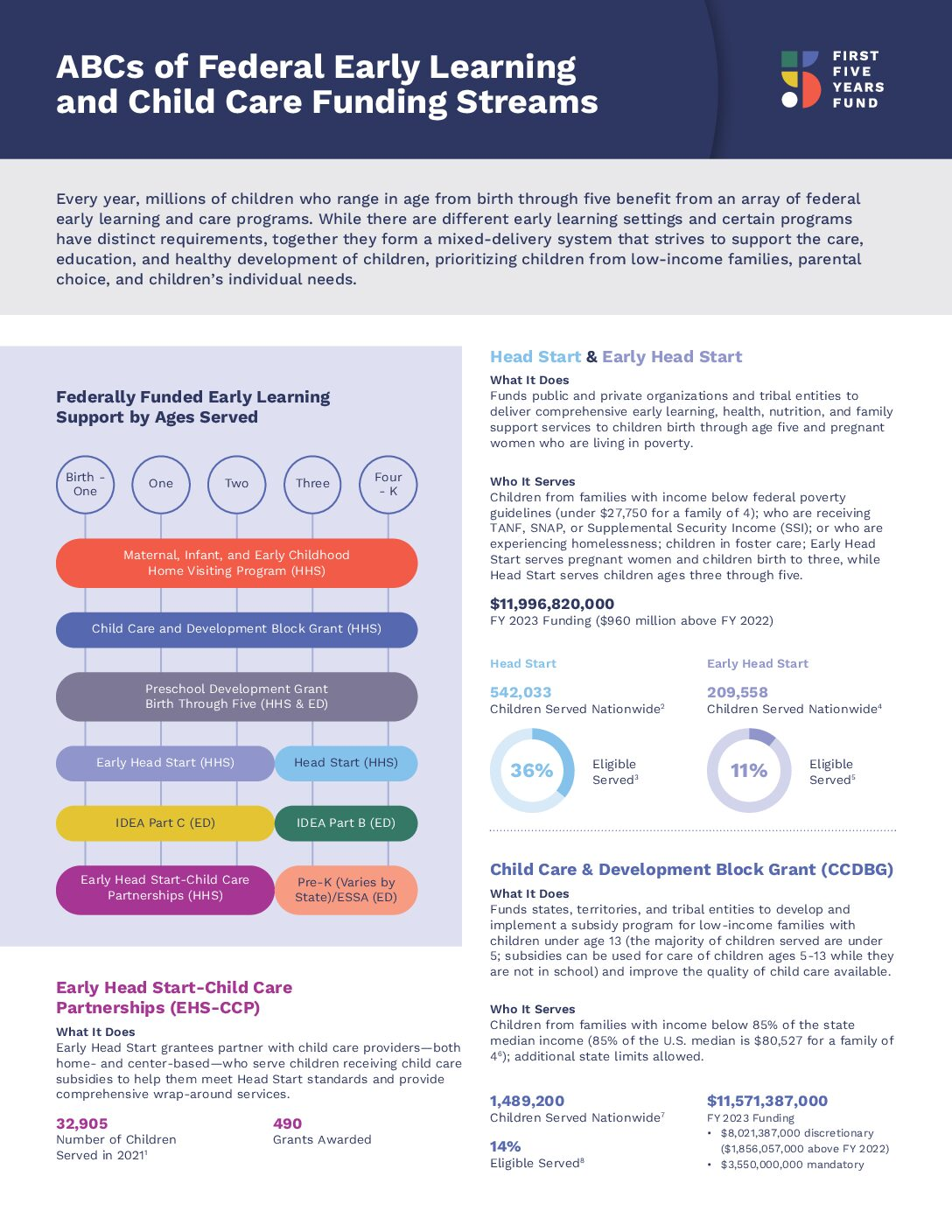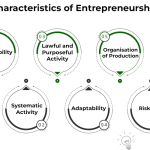Federally funded childcare has emerged as a pivotal topic in discussions about economic equity and support for working mothers, particularly in light of ongoing research by Nobel laureate Claudia Goldin. This analysis revolves around the historical implications of the Lanham Act, a 1940s initiative that provided crucial support for childcare programs during World War II. By creating nursery facilities to care for preschool-age children, the Lanham Act ensured that numerous mothers could contribute to the workforce while supporting the war effort, highlighting the significant role women play in both familial and economic structures. As we explore the impact of such federally funded initiatives, it becomes clear how essential these programs are in shaping policies that benefit working mothers today. This historical lens not only reflects on the past but also offers valuable insights into future childcare solutions that can empower working families.
Exploring the realm of government-sponsored childcare presents a fascinating insight into the support systems designed for employed parents. The historical context provided by Claudia Goldin’s research on wartime childcare initiatives, particularly under the aegis of the Lanham Act, emphasizes the urgent need for childcare services that cater to working families. These structures not only aimed to facilitate women’s entry into the workforce but also underscored the social perception of mothers’ roles during and after World War II. Analyzing this evolution of childcare programs sheds light on the ongoing dialogue surrounding childcare accessibility and its implications for modern working mothers. As we delve deeper, the significance of these early models can guide current discussions on equitable support for families across all socioeconomic backgrounds.
The Impact of Federally Funded Childcare on Working Mothers
Federally funded childcare has proven essential for empowering working mothers, reflecting a critical intersection of economic policy and social justice. Specifically, the success of the Lanham Act during World War II showcased how impactful government initiatives can be in supporting working mothers. This 1940 legislation underscored the need for accessible childcare facilities, allowing women to join the workforce and contribute to war efforts without compromising their family responsibilities. The availability of such services enabled mothers to pursue employment opportunities, provide financial support for their families, and participate in the economy, particularly in essential industries.
As Claudia Goldin’s recent research highlights, the childcare program initiated by the Lanham Act significantly influenced labor market dynamics. Women who had previously been confined to household roles began to gravitate towards high-wage jobs, filling positions in defense contracting and manufacturing. The act not only facilitated childcare access but also contributed to a cultural shift wherein women’s employment became increasingly accepted and valued. Through this lens, it’s evident that federally funded childcare is not solely a social service; rather, it catalyzes economic growth and advances gender equity in the labor market.
Lessons from the Lanham Act for Modern Childcare Programs
The Lanham Act serves as a historical guide for contemporary policymakers as they design childcare programs that adequately support working families. Its unique structure, which provided comprehensive childcare services for women entering the workforce during a time of national crisis, illustrates the far-reaching benefits of such initiatives. Policymakers today can take cues from this model, ensuring that childcare programs are accessible, high-quality, and designed to meet the diverse needs of families. A well-implemented childcare program could improve maternal employment rates, bolster economic productivity, and contribute to the well-being of children.
Incorporating elements from the Lanham Act into present-day childcare initiatives can also offer insights into tackling barriers faced by working mothers, particularly in terms of affordability and accessibility. As the economy evolves, so too do the childcare needs of families. The recent challenges brought about by the pandemic have underscored the necessity of reliable childcare services. Hence, expanding federally funded childcare now could revitalize sectors requiring labor participation and support a more inclusive workforce, ultimately reflecting the lessons learned from the Lanham Act about the societal value of investing in the care of children.
Analyzing Claudia Goldin’s Research Contributions
Claudia Goldin’s contributions to economic history illuminate the complex relationship between gender roles, labor markets, and government intervention. Her analysis of the Lanham Act reveals crucial insights into how historical policies shaped the workforce dynamics we see today. As the first female economist to receive a Nobel Prize, Goldin’s work emphasizes the importance of structural factors that enable women to participate in the economy fully. Her findings advocate for a critical examination of past policies to understand their implications and potential applicability in today’s context.
Moreover, Goldin’s research also highlights that the benefits of the Lanham Act were not uniformly distributed among women. The initiative sometimes prioritized areas where women were already seeking work, indicating that future programs must also consider equitable access. By unpacking these nuances, Goldin encourages a more comprehensive understanding of how policies can better serve all demographics of working mothers in contemporary society, ultimately leading to a more equitable economic landscape.
World War II and the Evolution of Women’s Workforce Participation
World War II catalyzed a significant transformation in women’s roles within the workforce, largely facilitated by policies like the Lanham Act. As men enlisted in military service, women filled the gap in essential industries, leading to a societal shift that began to reshape perceptions of working mothers. Goldin’s thorough analysis reveals that the war-induced labor demand prompted a reevaluation of women’s contributions, presenting an opportunity for them to break through traditional domestic roles and assert their presence in various sectors.
The integration of women into the workforce during this era, supported by federally funded childcare, laid the groundwork for future labor participation trends. Subsequent generations of women have continued to build upon this legacy, navigating shifts in societal attitudes towards motherhood and career aspirations. Understanding this historical context is critical in guiding contemporary discussions on gender equity and the importance of supportive policies for working mothers, reinforcing the lessons learned from World War II.
The Role of Childcare in Economic Recovery and Growth
Childcare plays a vital role in bolstering economic recovery and growth, particularly in light of the challenges faced during and after the COVID-19 pandemic. Through a historical lens, the experience of the Lanham Act demonstrates how investing in childcare not only supports families but also catalyzes broader economic benefits. By ensuring that working mothers have access to reliable childcare, economies can tap into the full potential of their labor force, mitigating the long-term impacts of labor shortages.
Moreover, integrated childcare solutions can promote workforce participation among populations that may have been hindered by caregiving responsibilities. As studies show, when childcare is accessible and affordable, more women and caregivers can enter, re-enter, or remain in the workforce, thus enhancing overall labor market participation rates. Policymakers must recognize that federally funded childcare is an economic imperative, as it can lead to increased consumer spending and higher productivity levels across various sectors.
Challenges Facing Working Mothers in Today’s Economy
Despite notable advancements, working mothers today still encounter significant challenges within the labor market. Issues such as inadequate access to affordable childcare, workplace discrimination, and the burden of unpaid domestic labor continue to impede their ability to thrive professionally. Claudia Goldin’s research highlights the ongoing relevance of these challenges and the persistent societal attitudes towards women balancing work and family commitments. As a result, modern initiatives must address these barriers while advocating for policies that foster equity.
Moreover, as the workforce continues to evolve, there is a pressing need for employers and policymakers to create supportive work environments that acknowledge the complexities of working motherhood. Strategies such as flexible work hours, parental leave policies, and on-site childcare facilities can make a significant difference in enabling mothers to succeed in their careers. Recognizing that working mothers are critical economic contributors will be essential in shaping future labor policies that promote inclusivity and equity.
Evolving Perceptions of Working Mothers
The perception of working mothers has undergone significant transformations over the decades, particularly in light of historical events such as World War II. Initially faced with societal pushback, women entering the workforce began to gain recognition for their contributions, a shift that was largely propelled by the exigencies of the war. Today, as discussions around gender equity continue, the narrative around working mothers is slowly advancing, though it remains fraught with traditional views that can hinder progress.
Claudia Goldin’s research sheds light on how historically entrenched attitudes still affect modern-day perceptions. With ongoing advocacy for equitable workplace policies and the recognition of caregiving as valuable labor, there is hope for reshaping societal attitudes towards working mothers. Engaging in open dialogues about the significance of their roles can help dismantle stigmas and foster an inclusive environment where women can flourish, both in their careers and as caregivers.
Policy Recommendations for Future Childcare Initiatives
Informed by historical precedents like the Lanham Act, future childcare initiatives must be designed with inclusivity and accessibility in mind. Policymakers should prioritize the development of programs that cater to the diverse needs of working mothers, ensuring that high-quality, affordable childcare options are available nationwide. This could involve creating comprehensive federal funding mechanisms similar to those established during World War II, aimed not only at low-income families but for all working parents.
Additionally, policy recommendations should include community-driven coalitions that assess local childcare needs, making adjustments based on demographic shifts and employment trends. Expansion of childcare facilities in underserved areas, coupled with initiatives to improve the quality of care, could foster an environment where working mothers have the support they need to succeed. Investing in childcare is not merely a social obligation; it is an essential strategy for economic growth and workforce stability.
The Lasting Legacy of the Lanham Act on Today’s Childcare Policies
The legacy of the Lanham Act remains pertinent in contemporary discussions surrounding childcare policies. Its groundwork laid during a crucial historical period serves as a beacon for today’s policymakers, encouraging a reassessment of how federally funded childcare can reshape the workforce landscape. As the challenges facing working mothers evolve, the principles exemplified by the Lanham Act can still inform modern approaches, ensuring that support systems for families are robust and far-reaching.
By studying the outcomes of the Lanham Act and recognizing its limitations, current initiatives can be more effectively crafted to meet the needs of diverse family structures. It’s crucial to adopt a comprehensive framework that not only focuses on access but also emphasizes the quality of care and nutrition. As we move forward, embracing the lessons learned from past policies while innovating to address current societal needs will be essential in securing an equitable future for all working mothers.
Frequently Asked Questions
What is federally funded childcare and how does it relate to the Lanham Act?
Federally funded childcare refers to childcare services that receive financial support from the federal government. The Lanham Act, enacted during World War II, was pivotal in establishing such programs in the U.S., creating nurseries specifically designed to support working mothers whose contributions were essential to the war effort.
How did the Lanham Act impact working mothers during World War II?
The Lanham Act significantly impacted working mothers by providing federally funded childcare options, allowing them to enter or remain in the workforce. It offered extended daycare services and educational programs, facilitating women’s participation in essential wartime jobs.
What lessons can be learned from the federally funded childcare programs established under the Lanham Act?
The lessons from federally funded childcare programs under the Lanham Act highlight the importance of political will and infrastructure in supporting working mothers. It demonstrates how such programs can increase labor force participation and improve economic outcomes for families.
Is the federally funded childcare program established by the Lanham Act still active today?
No, the federally funded childcare program initiated by the Lanham Act was a temporary solution during World War II and has since ended. However, its legacy remains a touchstone in discussions about childcare support for working mothers in contemporary policy.
How did Claudia Goldin’s research contribute to our understanding of federally funded childcare?
Claudia Goldin’s research provides a comprehensive analysis of the Lanham Act’s impact on working mothers and the labor market during World War II. Her findings reveal how federally funded childcare transformed societal attitudes towards women in the workforce and shaped subsequent childcare policies.
What challenges did the Lanham nurseries face, and how did they adapt to serve working mothers?
Lanham nurseries initially faced societal skepticism about employing mothers with young children, yet they adapted by providing comprehensive care that included education and meals to support working mothers’ needs and promote their employment opportunities.
What are the modern implications of the findings from the Lanham Act regarding childcare and working mothers?
The findings from the Lanham Act underscore the ongoing need for robust federally funded childcare systems that support working mothers today. They suggest that investing in childcare can strengthen labor markets and enhance gender equality in the workplace.
How did the funding economics of the Lanham Act compare to today’s federally funded childcare initiatives?
Funding for the Lanham Act was substantial for its time, exceeding $52 million between 1943-46, aimed at creating broad access for working mothers. Modern federally funded childcare initiatives, while important, often focus on low-income families, indicating a need for broader access to support all working mothers.
| Key Point | Details |
|---|---|
| Introduction of the Lanham Act | The Lanham Act was created during WWII to support working mothers by providing federally funded childcare. |
| Objective of the Act | The act was meant to increase labor force participation by allowing mothers to work while their children were cared for. |
| Significance of the Nurseries | Lanham nurseries provided education, year-round supervision, and nutritional meals for children aged 2 to 11. |
| Impact on Women’s Employment | The act attracted many women into the workforce, particularly in industries that paid higher wages. |
| Historical Context | At the time, there was significant resistance to employing women with preschool children, but this changed due to the war. |
| Challenges in Research | Claudia Goldin’s research faced challenges in locating the nurseries due to inadequate federal records. |
| Conclusion and Ongoing Research | The research continues to unveil the long-term impacts of the Lanham Act on women in the workforce. |
Summary
Federally funded childcare has played a crucial role in enhancing workforce participation among mothers, particularly during the challenging era of World War II. The Lanham Act, which supported the establishment of nurseries, highlighted the impact of political will in addressing the childcare needs of working women. As more families sought economic stability, the availability of these services not only provided essential support for mothers but also contributed significantly to the labor force. This historical insight underscores the ongoing relevance of federally funded childcare in promoting gender equity in the workforce today.







